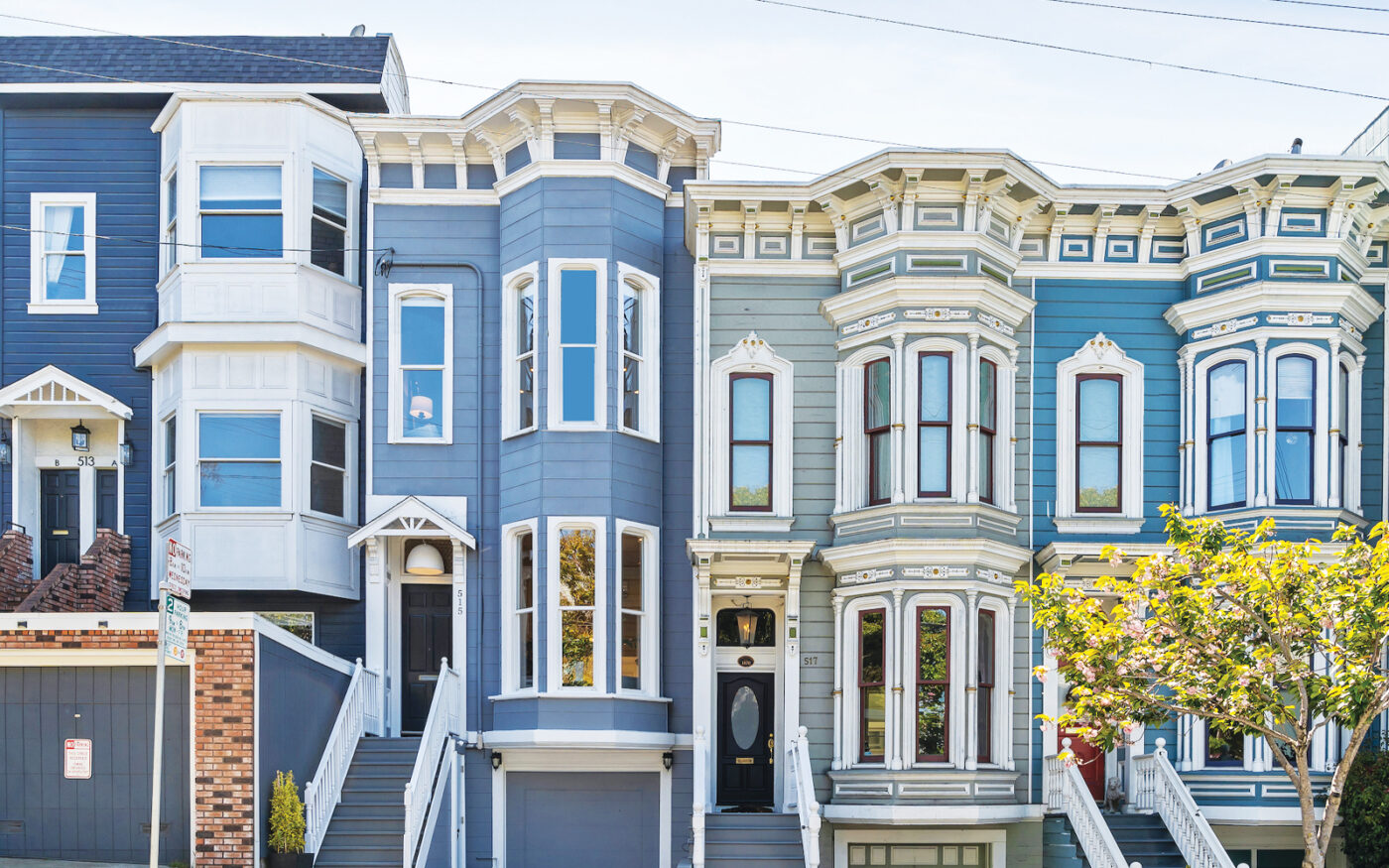Daria Saraf knew she had a hot property on her hands when she listed a Hayes Valley home in May. There are few single-families in the centrally located San Francisco neighborhood — filled with upscale boutiques, busy restaurants and a popular greenway — and fewer still on a quiet street, with a garden and garage.
The Sotheby’s International Realty agent listed the three-bedroom, 2.5-bath home just around the corner from the city’s famed “Painted Ladies” at just under $2 million and advised her sellers to “expect $2.2-$2.3 million, and hope for $2.4 million if we got very lucky.” Instead, the home got five offers, with three over asking to start, and sold for $2.65 million. At $1,700 per square foot, she said the sale marks the highest in the neighborhood’s history.
The small frenzy in Hayes Valley wasn’t a one-time event: Bidding wars are back in San Francisco after a months-long hiatus when quickly rising interest rates and dire headlines forecasting the city’s imminent demise helped bring the market to a near standstill.
Inventory Down, Competition Up
The average home sold for about 8 percent over asking in July, with the most competition in the $1-to-$3-million range, according to Compass data. At that price point, nearly 60 percent of sales were over list price from March through June of this year. About 40 percent of homes between $3 million and $7.5 million sold for over list as well.
Those figures are well below the heights seen during the first half of 2022, when about three-quarters of homes city-wide sold above list price and at about 20 percent over the asking price, on average. But it is a major improvement compared with just last winter, when Compass data shows only 30 percent of San Francisco homes sold for over asking. Last December was also the only time in the last few years when the average sale price for a single-family home was lower than the list price.
“Buyer demand has certainly rebounded strongly from the huge drop seen in the second half of 2022 and is running up against the low supply of new listings,” said Compass analyst Patrick Carlisle.
New listings in July were down 17 percent compared with last year, according to Compass data, continuing a downward trend. The lack of inventory, especially for turnkey homes in popular neighborhoods, is pushing the uptick in bidding wars, according to Compass agent Nina Hatvany. A Pacific Heights Victorian she recently listed at $3.6 million — a price she said was designed to stimulate competition — got five offers and sold for $900,000 over asking, despite being listed over the July 4 holiday weekend when buyers at that price point are often out of town.
”Buyers are really disappointed there isn’t much that is really ‘good’ on the market,” she said. “They imagine there will be great buying opportunities and if they can stomach the high rates, they can get a really good deal on price.”
“Buyers are really disappointed there isn’t much that is really ‘good’ in the market.”
But “when a property comes up that checks all their boxes, they find themselves competing with other eager buyers who have been waiting for the same thing,” she said.
Condo competitiveness is no match for that of single-family homes. In July, about 70 percent of homes sold over asking, compared with less than 40 percent for condos, co-ops and TICs, according to Compass. The average condo has sold below list price at numerous points since the start of the pandemic, and sales were still below list price in July, but have improved since selling at an average of 8 percent off list in December.
“Ultimately, it’s all supply and demand,” Carlisle said. Of the active listings on the market on August 1, 71 percent were condos, co-ops and TICs, and that doesn’t include new developments not listed on MLS.
“In the SF condo market, there is much more supply — including from new construction — and demand is weaker,” Carlisle said. “Especially in the downtown district — with [tech] layoffs, empty office buildings, and social issues — so competition is much softer, and indeed, sometimes it is the sellers competing for buyers, instead of buyers competing for listings.”
Demand for condos and tenancies in common outside the downtown core is “significantly stronger,” he added, but there are so many more downtown condo listings and sales that it swings the data for the entire property type.
Sellers Need to Get Real
Competition is up in much of the city, but some sellers still need a reality check, according to Frank Nolan of Vanguard Properties, especially as buyers now have to figure on interest rates that have plateaued around 6 to 7 percent, more than double the lows of the last few years.
“If a seller is expecting $500,000 over the list price, like we had a few years ago, that’s not usually going to happen,” he said. “It’s an important conversation that listing agents should have with their sellers upfront and really hone in on what the sellers’ expectations are in terms of price.”
“It says to me that San Francisco is here to stay.”
Read more


His agents have told him stories of sellers who didn’t get that kind of straight talk and took the home off the market rather than settle for less than they expected. A two-bedroom, one-bathroom single-family home in the Outer Sunset listed recently for just under $1 million with the hopes of eliciting multiple offers and hitting $1.3 million. They received five offers, but all were about $100,000 off that hoped-for price. The sellers planned to replace the home’s old knob-and-tube wiring before trying again, according to a Vanguard agent with knowledge of the listing.
That tactic could work, as buyers today do not appear to be looking for a project, no matter how minimal. Compass agent Butch Haze said his team recently put a Marina District two-bedroom condo on the market with a 2000s interior that included cherry brown kitchen cabinets. After a similar condo nearby with cabinets painted white got five offers, he expected some of the disappointed buyers who lost out on that deal to come knocking. They didn’t.
So he pulled the listing off the market, had the cabinets painted white, updated some other paint colors, changed a few light fixtures and advertised the home as “Coming Soon.” It sold before it was officially relisted, he said.
“Lesson learned,” he said via email. “Cabinets need to be white and the house needs to feel fresh and new. Buyers will come.”
A price drop, even at the highest end, can also bring out buyers’ competitive nature, according to Compass agent Neal Ward, who specializes in ultra-luxury properties. While there haven’t been many properties over $10 million with over-asking offers this year, there have been sales between $20 million and $30 million that have had multiple offers after a significant price drop because buyers have been sitting on the sidelines, he said, and waiting for the right moment to jump back in.
Three buyers on an over-$30 million property “lined up to compete against each other” says a lot about the city’s future, despite dire forecasts saying otherwise.
“It says to me that San Francisco is here to stay,” he said.
